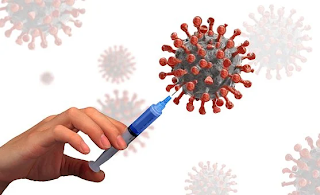393

A clinic or hospital is a place where the chances of getting an infection are higher. Evidence suggests that medical instruments like pacemakers, heart valves, catheters and stents get coated with harmful bacterial films. These hospital regulars are the primary source of hospital-based infections, accounting for two-thirds of all cases.
Image Credits: Pixabay
Researchers at the University of California, Los Angeles (UCLA) have developed a new surface treatment that will enhance the safety of these instruments without increasing any financial strain on the healthcare system.
The new method has been tested in both clinical and laboratory settings. In this technique, a thin layer of zwitterionic material (polymer having cations and anions) is deposited on the surface of the instrument and this layer is permanently bonded with it with the help of ultraviolet light irradiation. This layer helps to prevent germs from sticking to the surface.
Researchers applied this surface treatment to various medical equipment to check their resistance properties to different types of proteins, fungi and bacteria. They discovered that the barrier reduced the growth of the biofilm by more than 80 percent and 93 percent in other cases, depending upon the type of microbial strains.
“The modified surfaces exhibited robust resistance against microorganisms and proteins, which is precisely what we sought to achieve,” said Richard Kaner, a member of the California NanoSystems Institute at UCLA. “The surfaces greatly reduced or even prevented biofilm formation. And our early clinical results have been outstanding”.
The team then performed clinical research that involved 16 urinary catheter users who switched to silicone catheters having zwitterionic surfaces. Out of 16, 10 patients clarified that their urinary tract condition was much improved after using the surface-treated catheters. Thirteen patients decided to use these new catheters over the conventional ones after the study was over.
The catheters inserted in patients having urinary tract problems can become a breeding place for bacteria and dangerous biofilm growth. The bacteria from these biofilms are pumped out, causing infections in the body. Medical staff provided highly effective antibiotics to the patients using these devices that posed a longer-term risk of creating life-threatening antibiotic-resistant ‘superbug’ infection. But most of the bacteria developed resistance to them.
“The beauty of this technology is that it can prevent or minimize the growth of biofilm without the use of antibiotics. It protects patients using medical devices — and therefore protects all of us — against microbial resistance and the proliferation of superbugs,” said Kaner.
The surface treatment’s zwitterionic polymers are biocompatible and can absorb water. The water barrier formed on them prevents bacteria and other organic substances from sticking to them. According to Kaner, this surface treatment technology is cost-effective and non-toxic compared to other surface treatments like silver or antibiotics-infused coatings.
Besides its use in medical devices, the surface treatment technology could have non-medical uses, such as improving the performance and lifetimes of lithium-ion batteries and water treatment devices.
The detailed research has been published in the journal Advanced Materials.
Follow us on Medium!

